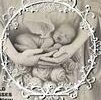Choosing Baby Clothing For Newborns
The littlest members of your family need clothes to keep them cozy, comfy and safe. The Children’s Place has lots of cuddle-worthy cute baby clothing for newborns, including dresses, bodysuits and outfits. Choosing mix-and-match basics for your baby will allow you to create a versatile wardrobe that will grow with him or her. Having a few basics on hand, and keeping in mind that you’ll be doing lots of laundry, will save you money and time, as well as make it easier to get the most use out of your baby’s tiny wardrobe. A newborn’s first few weeks at home require special care to protect the umbilical cord stump, which will need to be kept dry. Onesie clothing, with snaps across the front, is ideal for babies during this period. It avoids the need to pull shirts over baby’s head, and it is easier on the sensitive newborn skin. As infants begin to move around and explore their environment, body clothes will become essential. They can be a combination of one-piece garments, such as rompers and babygrows (also known as footie pajamas) with full leg openings for easy diapering. Some garments, such as t-shirts, have fold over scratch mitts to prevent young babies from accidentally scratching themselves. For special occasions, newborns might wear dresses or gowns, sometimes with reversible jackets and dual-sided bibs to provide versatility and minimize laundry. Babies might also wear hats (2-3) and socks (5-6), which can help them stay warm. Newborns are not yet toilet trained, and so will need diapers or nappies to protect against leakage. Some baby clothing comes with diaper covers to help prevent stains and to make it easier for you to get them on and off. Diapers can be supplemented with swim diapers, which are absorbent but have a waterproof coating to help babies enjoy their first swimming adventures. If your infant is a walker or will be using a stroller, consider a baby bunting or toasty foot muff to keep him or her warm on cold days. These can be purchased or made at home, and can also be used as a sling for nursing mothers. During the winter, many families opt to dress their newborns in layers. “Newborns have a hard time regulating their temperatures, and dressing them in layers can make them comfortable all the time,” says Lauren Gregor, co-founder of Rent-a-Romper, a service that allows parents to rent and return baby clothing as they outgrow it. It’s important to remember that baby sizing can vary from brand to brand, so look at each item’s sizing chart. Many newborns are born in the 0-3 month range, and so will need sizes that fit for the first four or five weeks of life. From there, your baby can transition into 3-6 month or 6-9 month clothing. It’s a good idea to have a few of each size on hand, so you can have options for different seasons and activities.
